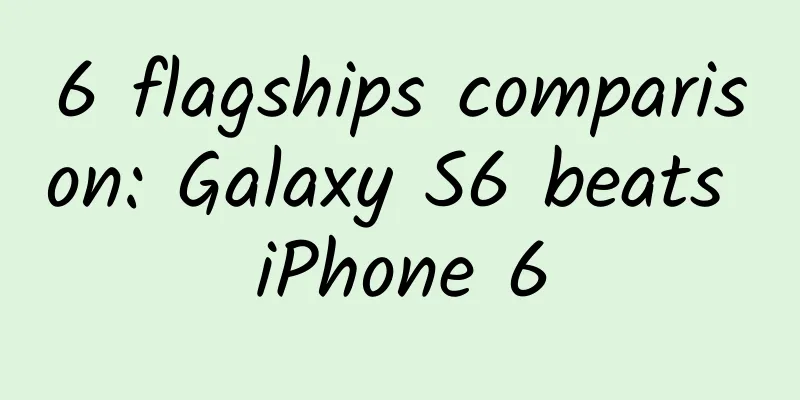What is the function of infrared space telescope? What twinkling stars have been photographed?

|
Astronomers hate cloudy days. There is nothing worse than not being able to see the stars. However, even in a cloudless night sky, we can only see limited light in visible light and other bands. Most of the light in ultraviolet and infrared bands is completely absorbed by water vapor, carbon dioxide, ozone, etc. in the earth's atmosphere, and people on the ground are almost helpless. However, in these bands, many details that cannot be seen in visible light can be seen, which is of great significance to astronomy. For example, in the infrared band, we can observe young stars, planets and primitive galaxies, which is of great significance to analyzing the origin of the universe, the Milky Way, the solar system, and even the earth and life. Astronomers racked their brains to think of ways to escape the influence of the atmosphere. The most direct and effective way is to launch space telescope satellites to conduct observations outside the Earth's atmosphere. Balloon and aircraft observations The properties of the near-infrared band, which is closer to visible light, are similar to those of visible light. It can be observed in places where the water content of the Earth's atmosphere is low, so ground-based infrared telescopes are mostly built in dry deserts, plateaus or Antarctica. However, for observations in the mid-infrared and far-infrared bands, these ground-based telescopes are unable to cope with them. In the 1960s, astronomers had no choice but to use balloons to carry detection instruments to high altitudes with low water content for infrared observations. However, the observation time of balloon detection was too short, the stability was poor, and the uncertainty was relatively high. Schematic diagram of the absorption rate of the earth's atmosphere to electromagnetic waves of different bands In 1974, a modified Lockheed C-141 transport plane flew into the sky and conducted infrared observations in the stratosphere 14 kilometers high. This was the NASA Kuiper Airborne Observatory (KAO), which was regarded as a treasure by infrared astronomers at that time. The plane was equipped with a 0.915-meter reflective telescope, which could observe 85% of infrared wavelengths at cruising altitude. Compared with the original balloons that drifted with the wind, this plane could provide more stable observation conditions and could observe continuously for more than 7.5 hours. The Kuiper Airborne Observatory made a total of 1,417 flights, obtained rich observation results, and greatly promoted the development of infrared astronomy. It took far-infrared images from the center of the Milky Way and other galaxies, studied the distribution of water and organic molecules in star-forming regions, and first discovered the rings of Uranus in 1977 and confirmed the existence of Pluto's atmosphere in 1988. The Kuiper Airborne Observatory retired in 1995. Close-up of the Kuiper Airborne Observatory and its telescope Compared with launching astronomical observation satellites, airborne observatories have the advantages of low cost and easy manual maintenance, so they are still being developed and applied. After the retirement of the Kuiper Airborne Observatory, NASA began to develop the more powerful SOFIA Stratospheric Observatory for Infrared Astronomy (SOFIA), which made its first observation in 2010. This modified Boeing 747 wide-body aircraft has a 5.5-meter-high and 4.1-meter-wide door at the tail, which carries a 2.5-meter-diameter reflecting telescope and can fly continuously for 10 hours at night. "SOFIA" is still in service. It will study the composition of planetary atmospheres and surfaces, explore the structure, evolution and composition of comets, determine the physical and chemical properties of the interstellar medium, and explore the formation process of stars and other stars. Close-up of the SOFIA Stratospheric Observatory for Infrared Astronomy and its telescope Infrared Astronomical Satellite (IRAS) Although the cost of airborne infrared observatories is low, 15% of infrared light is still invisible, and the impact of aircraft vibration cannot be avoided. Therefore, a space telescope that transmits infrared waves is still the best choice. On January 25, 1983, the United States, the Netherlands, and the United Kingdom jointly launched the world's first infrared space telescope, the Infrared Astronomical Satellite (IRAS). Infrared All-Sky Survey images taken by IRAS IRAS weighs 1.08 tons, is equipped with a primary mirror with a diameter of 0.57 meters, and operates in a sun-synchronous orbit at an altitude of 900 kilometers. This is the first time that humans have completely avoided the influence of the earth's atmosphere and conducted astronomical observations in the infrared band without any obstruction. IRAS scanned 96% of the sky in four different bands of 12 microns, 25 microns, 60 microns, and 100 microns, and obtained the world's first infrared all-sky survey image, creating a precedent for space-based infrared astronomy. IRAS has discovered about 350,000 infrared emission sources, most of which are still awaiting identification. In addition, it has also discovered new celestial bodies such as 4 asteroids and 6 comets. IRAS is the first satellite to use superfluid in space. Because the intensity of infrared light is correlated with the temperature of an object, the satellite itself also emits infrared light. In order to avoid the influence of the satellite's own infrared light, IRAS carries 73 kg of superfluid liquid helium as a refrigerant. This liquid helium evaporates slowly and can cool the telescope to an extremely low temperature of -271°C (2 Kelvin). These liquid helium resources are limited. After 9 months and 26 days of operation, the liquid helium was exhausted, the temperature of IRAS rose, affecting its normal observation, and the mission ended. Infrared Space Observatory (ISO) On November 17, 1995, the Infrared Space Observatory (ISO) was successfully launched under the leadership of ESA, in cooperation with the Japan Aerospace Exploration Agency and NASA. Compared with IRAS, ISO's performance indicators have been further improved. It weighs 2.5 tons, has a primary mirror diameter of 0.6 meters, and operates in a large elliptical orbit with a perigee of 1,000 kilometers and an apogee of 70,600 kilometers. In this orbit, its orbital period is 24 hours, which is consistent with the rotation speed of the earth and the work and rest of ground researchers, which is conducive to improving the efficiency of the observatory. ISO's primary mirror ISO's design indicators were improved with reference to IRAS, and it carries four observation instruments, which expands its observation wavelength range to 2.5 to 240 microns. Its sensitivity in the 12-micron band has increased by 1,000 times, and its angular resolution has increased by 100 times, which can be described as "seeing the big from the small". In addition, it carries 283 kilograms of liquid helium refrigerant, which further extends its service life to nearly two and a half years. ISO's Long Wave Spectrometer Spare Parts ISO has achieved fruitful observation results. Originally, astronomers believed that planets could only form around young stars, but ISO discovered young planets around dying stars, expanding theoretical knowledge. ISO has excellent performance through the infrared spectrometer it carries. By identifying the spectrum, it can determine the material composition of distant celestial bodies. For example, ISO has measured the chemical composition of the atmospheres of several planets in the solar system, and for the first time detected hydrogen fluoride molecules in interstellar gas clouds, and also detected the presence of water molecules in the Orion Nebula. The Crab Nebula in different wavelengths can show different details. Spitzer Space Telescope The Spitzer Space Telescope is the third space telescope dedicated to infrared astronomy after IRAS and ISO. It is named after American astronomer Lyman Spitzer, who proposed the idea of deploying a telescope in outer space as early as 1946. The Spitzer Space Telescope was launched in August 2003. It weighs only 0.95 tons, but the diameter of its primary mirror is 0.85 meters, because the primary mirror uses lightweight metal beryllium. More advanced refrigeration technology has significantly reduced the amount of liquid helium it consumes. It only carries 50.4 kilograms of liquid helium, but it has been used for nearly 6 years. The Spitzer Space Telescope has chosen a special Earth tracking orbit. In this orbit, the telescope will move away from the Earth year by year to further reduce the impact of the Earth's infrared heat source on observations, while reducing the use of liquid helium. Simulation of Spitzer observations The Spitzer telescope carries three observation instruments with a detection band of 3.6 to 160 microns. The most famous detection achievement is that it became the first telescope to directly capture an exoplanet in 2005. In March 2006, the Spitzer telescope discovered an 80-light-year-long double helix nebula in the center of the Milky Way. According to astronomers, the reason why it is twisted into a double helix shape is because there is a supermassive black hole in its center, and the huge magnetic field generated by the black hole causes the light path to deflect. This is one of the direct evidences of the existence of black holes. The "Eye of God" spiral nebula photographed by the Spitzer Telescope. Blue corresponds to a wavelength of 3.6 to 4.5 microns, green corresponds to a wavelength of 5.8 to 8 microns, and red corresponds to a wavelength of 24 microns. Spitzer ran out of liquid helium refrigerant on May 15, 2009, which terminated its observations in the far-infrared band. Unlike the previous two generations of IRAS and ISO, which were directly retired after the refrigerant ran out, Spitzer's infrared array camera continued to work in the near-infrared band and discovered more exoplanets, brown dwarfs, protostars and other distant and dim celestial bodies. This period was called the "Spitzer Warm Mission." It was not until January 30, 2020 that it was permanently shut down due to insufficient energy supply. The Spitzer telescope fell asleep forever after being drained of its last bit of energy. Herschel Space Observatory On May 14, 2009, the European Space Agency successfully launched the Herschel Space Observatory, named after the astronomers William and Caroline Herschel who discovered Uranus. It was the world's largest space telescope before the launch of the James Webb Space Telescope, weighing 3.4 tons and equipped with a telescope with a primary mirror diameter of 3.5 meters. A larger aperture can bring more powerful observation capabilities. The Herschel Space Observatory is the only telescope that can see from the mid-infrared band of 55 microns to the submillimeter band of 672 microns. Infrared rays with such a long wavelength can pass through interstellar gas and dust, allowing the Herschel Space Observatory to see the mysterious areas covered by dust. Herschel Space Observatory's primary mirror The primary mirror of the Herschel Space Observatory is not made of glass, but of silicon carbide. Because a glass mirror with a diameter of 3.5 meters will produce significant deformation under huge temperature changes, and silicon carbide has a low thermal expansion coefficient, high thermal conductivity, high hardness and high rigidity, it is very suitable for making a primary mirror with a diameter of 3.5 meters. The Herschel Space Observatory operates at the Lagrange L2 point, 1.5 million kilometers from the Earth, which maximizes the benefits of observation, power supply and communication capabilities while being as far away as possible from the three major infrared heat sources: the Sun, the Earth and the Moon. The Herschel Space Observatory has detected the evolution of galaxies in the early universe, observed star formation and its interaction with the interstellar medium, and measured the atmospheric chemical composition of planets, comets and satellites in the solar system. Rose Nebula photographed by the Herschel Space Observatory. Blue corresponds to a wavelength of 70 microns, green corresponds to a wavelength of 160 microns, and red corresponds to a wavelength of 250 microns. The core detector of this infrared telescope also needs liquid helium cooling. It carries about 320 kg of liquid helium to cool the core components of the telescope to below -271°C. After nearly 4 years of normal operation, it ran out of liquid helium on April 29, 2013, and the mission ended. The Herschel Space Observatory discovered the existence of oxygen molecules in interstellar space in August 2011, and in October of the same year, by measuring the deuterium content in Comet Hartley 2, it showed that most of the water on Earth may have originally come from comet impacts. Thanks to the growing development of computer technology, the telescope's data collection and storage capabilities have been greatly improved. After its retirement in 2013, it still left a huge amount of scientific data waiting for astronomers to process. In January 2014, ESA astronomers used Herschel data to determine for the first time the existence of water vapor on the dwarf planet Ceres, causing astronomers to rethink the boundaries between comets, asteroids and dwarf planets. It was not until 2017 that astronomers completed the analysis of the detection data left by Herschel. Wide-field Infrared Survey Explorer (WISE) Widefield Infrared Survey Explorer (WISE) is a small infrared space telescope launched by NASA on December 14, 2009. It weighs only 0.66 tons, is equipped with a primary mirror with a diameter of 0.4 meters, and operates in a sun-synchronous orbit at an altitude of 525 kilometers. This satellite is smaller than previous infrared space telescopes because it has different tasks. WISE will focus on rapid imaging of the entire sky in the 3.3, 4.7, 12 and 23 micron bands to search for asteroids, comets and some cold and dim stars. WISE is small and agile, taking one image every 11 seconds, and by the end of 2010, it had taken 1.5 million images. Based on these images, astronomers discovered 33,500 new asteroids and comets in the solar system, including Earth's first Trojan asteroid. In addition, it discovered a new type of brown dwarf outside the solar system. After 10 months, WISE ran out of liquid helium and entered hibernation mode. Wide-field infrared measurement detector observation simulation diagram Unlike other satellites that were directly retired, WISE was reawakened in 2013 and renamed the Near-Earth Object Wide-field Infrared Survey Explorer (NEOWISE). It continues to search for near-Earth asteroids and comets in the near-infrared band, and looks for asteroids that pose a risk of collision with the Earth. Comet Siding Spring photographed by the Wide Field Infrared Survey Explorer James Webb Space Telescope The James Webb Space Telescope, a collaboration between NASA and ESA, has a huge primary mirror with a diameter of 6.5 meters, which focuses on receiving near-infrared light from 0.6 to 28.5 microns. It was launched on December 25, 2021, and will replace the Herschel Space Observatory, breaking the record for the world's largest space telescope. Its technology has reached the pinnacle that humans can currently achieve. The James Webb Space Telescope's huge primary mirror The future is promising The United States also has mid- to long-term plans to launch several infrared space telescopes, including the Nancy Grace Roman Space Telescope to be launched in 2027 and the Origins Space Telescope to be launched in 2035. The Roman Space Telescope is equipped with a 2.4-meter-diameter wide-field primary mirror. It will explore the history of cosmic expansion and changes in cosmic structure, accurately measure the impact of dark energy in the universe, and verify the consistency of space-time curvature and general relativity. The design of the Origins Space Telescope is even more eye-catching. It will have a huge primary mirror with a diameter of 8 to 15 meters, which will achieve a leap in observation capabilities in the far-infrared band, and its angular resolution will be more than 10,000 times higher than that of Herschel. Simulation of the Roman Space Telescope Simulation of the Origin Space Telescope Looking at the history of space infrared telescope launches, we can see that the primary mirror diameter is getting larger, the primary mirror material is getting more advanced, the cooling system is getting more powerful, and the data acquisition and communication capabilities are getting more efficient. This will bring finer angular resolution and present unprecedented details. Comparison of the primary mirror sizes and temperatures of the world's major infrared space telescopes Human curiosity is great, and it leads humans to explore the origin of the universe and the origin of life. This requires the technical support of infrared space telescopes. Only through these cold telescopes can humans "not be afraid of floating clouds blocking their eyes" and ignite the surging and passionate hearts of generations. |
>>: Why do some people see the "devil's face"? It may be related to "visual impairment"...
Recommend
Google "repents" to cut off supply to Huawei: It is reported that it is lobbying for an exemption from the ban
This article is reprinted with permission from AI...
What to do if your phone gets "hot" in summer? Here's how to cool it down quickly!
The weather is getting hotter and hotter. Have yo...
Ad landing page conversion is poor? 3 reasons!
The effectiveness of the landing page is related ...
What are the functions of the pet mini program? How to develop a pet store mini program?
Nowadays, more and more people like to keep pets, ...
The difference between iQiyi splash screen ads and information flow ads
Often, advertisers will ask, iQiyi has so many ad...
Xbox One major update: game streaming PC compatible with 360
The latest news shows that Microsoft has prepared...
Look at the blood sugar in the physical examination report! It may reflect a big problem, you'd better know it early!
Sugar, a blend of five flavors, is the first tast...
The secrets of Xigua Video’s recommendation mechanism revealed!
To understand the recommendation mechanism, we mu...
The elderly have become the biggest victims of the Internet age! Who will deal with the chaos of big data?
Every year, March 15 brings us many unexpected th...
The “refined” community operation routines of online education!
In the online education sector, course communitie...
How can a public account quickly gain over 10,000 followers through pure content operations?
1. Operation Background [Operation objects] Two l...
MIR DATABANK: Review of China's automation market in the third quarter of 2020 and annual forecast
According to MIR DATABANK data, the overall autom...
Optimize 200 series AMD releases the latest 15.7 WHQL driver
AMD has released the latest graphics card catalys...
These 11 bad habits are disease "catalysts"! How many of them are you among?
The emergence of diseases is sometimes closely re...









